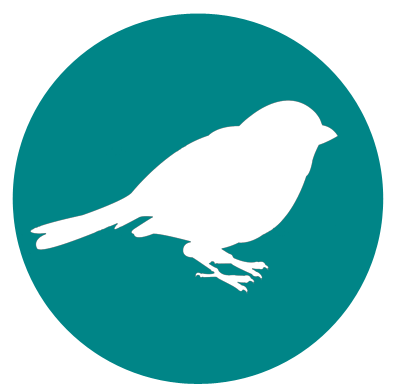Birding at Highbanks Metro Park
Lewis Center, OhioGeneral Information
Address
9466 Columbus Pike, Lewis Center, OH 43035
County/Counties
Delaware, Franklin
DeLorme Page Number and Coordinates
(7th Edition and earlier) page 58, C-1
Nearest Town or City
About two miles north of Worthington, Ohio.
About Highbanks Metro Park
Park is about 1146 acres in size, including the southern preserve area which is not open to the public. Park is predominantly woodlands, traversed by the gravel-covered Dripping Rock Trail (2.44 miles) and Overlook Trail (2.0 miles). Open meadow/field habitats are accessed by the asphalt-paved Big Meadows Trail (~1 mile), the main park road, and also by the unimproved pet trail also known as Coyote Run trail (3.7 miles). Portions of the pet trail also run through and along the edges of wooded areas. The improved River Trail (0.64 miles) runs through a wooded corridor along the Olentangy River. The Wetlands area is accessed by the unimproved Wetlands Trail (0.42 miles), which turns into a short boardwalk ending at an observation blind. The Wetlands Trail is accessed from the Overlook Trail. The trails are fairly well marked but obtaining a park map is highly recommended before setting out in the park for the first time.
In the spring and fall, the first part of the pet trail where it loops through an old orchard can be a great place to observe migrating warblers and other migrants. Migrants can also be observed along other sections of the pet trail, especially in wooded areas, and near the pond in the back part of the trail, including the back loop of the trail. Migrating ducks can be observed in the wetlands in the late fall and early spring when ice is not present.
Nesting birds of note in the open meadows/fields of the park include Yellow-breasted Chat (the main and back loops of pet trail), Eastern Bluebird (in bluebird boxes), Eastern Kingbird, Tree Swallow (some in bluebird boxes), Eastern Meadowlark (in Big Meadows field), Common Yellowthroat, Brown Thrasher, Field Sparrow, Song Sparrow, and American Woodcock. The fields along either side of the main road near the entrance are great spots to see and hear the courtship flight of the American Woodcock from February/March through May.
Nesting woodland birds of note include Acadian Flycatchers, Wood Thrushes, Eastern Wood-Pewees, Eastern Phoebes, Great-crested Flycatchers, Scarlet Tanagers, Yellow-billed Cuckoos, Yellow-throated Vireos, and Red-eyed Vireos. One also can hear and see Louisiana Waterthrushes which nest along the small streams that run through the ravines in the woods. Various woodpeckers, Barred Owls, Great Horned Owls, Red-tailed Hawks, and Cooper’s Hawks also may be observed in the woodlands year-round. Summer Tanagers nest in the park and can be seen and heard along the woodland edges in the Nature Center parking lot, in the Oak Coves picnic area, and along the main park road. Indigo Buntings also nest in the park and can be numerous along the pet trail, main park road, Big Meadows Trail, and woodland edges.
Near and along the River Trail, nesting birds include Baltimore Orioles, Orchard Orioles, Warbling Vireos, and Yellow-throated Warblers. At the Wetlands area in the spring and summer, nesting birds observed include Yellow Warblers, Barn Swallows, and Tree Swallows, with an occasional Purple Martin. Common waterfowl nesters at the wetlands include Mallards, Wood Ducks, Canada Geese, and Pied-billed Grebes. Chimney Swifts and Common Nighthawks can be seen overhead at the Wetlands and in other areas of the park in the spring and summer. An occasional Willow Flycatcher can be seen and/or heard in the Big Meadows area near the River Trail, and also in the wetlands area.
Visiting Information
Closed hours/season
6:30am to 10pm April to September
6:30am to 8pm October to March
Parking Areas
Numerous throughout the park.
Fees/Permits
None.
Restroom Facilities
At Nature Center when open, modern facilities in Oak Coves and Big Meadows areas, primitive facility in Big Meadows area.
Harmful Insects, Poisonous Plants, or Animals
Poison ivy is present in areas. Ticks are numerous in the spring and summer along the pet trail.
Restaurants in the Area
Numerous within one mile north, two miles south, and three miles east.
Other Useful Information
Pet trail and wetland trail can be very muddy in the winter and spring. Both are unimproved trails. Ticks are numerous on pet trail in spring and summer. “Birds of Highbanks Metro Park” checklist is available at the Nature Center.
Other Birding Spots in the Area
None in immediate vicinity because of development. Within a 30-minute drive are Delaware State Park and Reservoir, Delaware Wildlife Area, Alum Creek State Park and Reservoir, Hoover Reservoir, Glacier Ridge Metro Park, Sharon Woods Metro Park, and Blendon Woods Metro Park.
Birds of Interest by Season

Winter
Great Horned Owl, Barred Owl, Pileated Woodpecker, Hermit Thrush, Northern Mockingbird, Eastern Towhee, Carolina Wren, Eastern Bluebird, American Tree Sparrow, Dark-eyed Junco, Cedar Waxwing, Brown Creeper, Yellow-bellied Sapsucker, Red-tailed Hawk, Cooper’s Hawk, and Golden-crowned Kinglet.
Spring
Great Horned Owl, Barred Owl, Yellow-breasted Chat, Summer Tanager, Scarlet Tanager, Eastern Bluebird, Pileated Woodpecker, American Woodcock, Common Nighthawk, White-throated Sparrow, Yellow-throated Warbler, Yellow Warbler, Common Yellowthroat, Louisiana Waterthrush, Eastern Phoebe, Baltimore Oriole, Orchard Oriole, Brown Thrasher, Eastern Meadowlark, Eastern Kingbird, Wood Duck, Eastern Towhee, Northern Mockingbird, Red-tailed Hawk, Cooper’s Hawk, Pied-billed Grebe, Cedar Waxwing, Carolina Wren, House Wren, Tree Swallow, Barn Swallow, Northern Rough-winged Swallow, Purple Martin, Blue-gray Gnatcatcher, Indigo Bunting, Red-eyed Vireo, White-eyed Vireo, Warbling Vireo, Yellow-throated Vireo, Solitary Vireo, Golden-crowned and Ruby-crowned Kinglets, Great Blue Heron, Green Heron, and migrant warblers and waterfowl.
Summer
Great Horned Owl, Barred Owl, Yellow-breasted Chat, Summer Tanager, Scarlet Tanager, Eastern Bluebird, Pileated Woodpecker, American Woodcock, Common Nighthawk, Yellow-throated Warbler, Yellow Warbler, Common Yellowthroat, Louisiana Waterthrush, Eastern Phoebe, Baltimore Oriole, Orchard Oriole, Brown Thrasher, Eastern Meadowlark, Eastern Kingbird, Wood Duck, Eastern Towhee, Northern Mockingbird, Red-tailed Hawk, Carolina Wren, House Wren, Tree Swallow, Barn Swallow, Northern Rough-winged Swallow, Purple Martin, Indigo Bunting, Red-eyed Vireo, White-eyed Vireo, Warbling Vireo, Yellow-throated Vireo, Pied-billed Grebe, Cedar Waxwing, Blue-gray Gnatcatcher, Great Blue Heron, and Green Heron.
Fall
Pileated Woodpecker, Red-tailed Hawk, Cooper’s Hawk, Eastern Bluebird, White-throated Sparrow, Swainson’s Thrush, Hermit Thrush, Cedar Waxwing, Brown Thrasher, Northern Mockingbird, Blue-gray Gnatcatcher, Carolina Wren, Brown Creeper, Yellow-bellied Sapsucker, Eastern Towhee, Golden-crowned and Ruby-crowned Kinglets, and migrant warblers and waterfowl.

